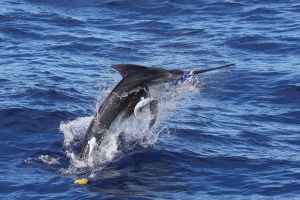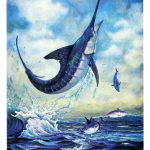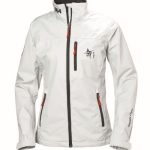 The Inter-American Tropical Tuna Commission recently announced new requirements for fisheries targeting tuna in the Eastern Pacific Ocean (EPO). These new regulations intend to reduce sea turtle bycatch but have the potential to help billfish as well. While much of the resolution focuses on sea turtle-specific protections, two major factors may also benefit billfish. These include the increasing observer coverage on commercial fishing boats and the use of circle hooks.
The Inter-American Tropical Tuna Commission recently announced new requirements for fisheries targeting tuna in the Eastern Pacific Ocean (EPO). These new regulations intend to reduce sea turtle bycatch but have the potential to help billfish as well. While much of the resolution focuses on sea turtle-specific protections, two major factors may also benefit billfish. These include the increasing observer coverage on commercial fishing boats and the use of circle hooks.
Observer Program Implementation
The first way this resolution may help conserve billfish is the intent to bolster observer coverage onboard commercial vessels. Observers are independent beings (not tied to the fishing boat) who provide an accurate count of the species of organisms caught accidentally by fishing vessels. Typically, even if an observer focuses on one group of animals, like turtles, they will still account for others. An increase in observers could mean that more information on billfish bycatch (as well as other species) will be reported. This helps scientists and policymakers know how many billfish are caught accidentally so they can adjust policies to increase sustainability. It can also aid in stock assessments, providing data on billfish age, size, and other biological information.
More observers onboard commercial vessels also directly benefit The Billfish Foundation’s Tag & Release Program. It is not uncommon for fish tagged by TBF anglers to be recaptured as bycatch by commercial vessels. Sometimes the fishermen will report the recaptures to us, which we appreciate immensely. However, this is not always the case. If observers are onboard, there is a higher likelihood that the recaptured fish will be reported. The information that we get from recaptured fish is incredibly valuable and helps us learn more about billfish migration, life history, biology, and mortality. We communicate these findings to the public, scientists, and policymakers in order to better conserve billfish.
Hook Type Requirements
The second major IATTC sea turtle requirement that may benefit billfish is the announcement that longline vessels (who fish in a shallow set manner – less than a 100 meters) must either use only “large” circle hooks or only finfish (not squid) as bait. If vessels choose to use finfish as bait, there is less benefit to billfish, as billfish will still seek finfish. However, if longliners choose to use only circle hooks, billfish conservation could stand to score an enormous win. IATTC defines circle hooks as a hook with the point turned perpendicularly back to the shank to form a generally circular or oval shape, and the point of the hook not offset more than 10 degrees. Anything greater than ten degrees would be just like using a J hook. TBF will monitor this since this could provide information regarding the effectiveness of certain offset circle hooks.
Current research supports that using circle hooks over J hooks increases the chances of billfish survival after release. This is because the round shape of circle hooks causes them to lodge in the corner of the fish’s mouth, while J hooks tend to get deep-hooked. Deep-hooking occurs when the J hook slides down the bony throat of the fish and hooks into vital organs. Removing the hook tears and damages these organs, while leaving it in is painful for the fish and leaves it open to infection. As a result, using circle instead of J hooks far increases the likelihood of the fish surviving after release. Thus, incidentally caught circle-hooked billfish that are reeled in alive have a far higher chance of surviving the encounter than a J-hooked billfish. The same holds true for longlines; the circle-hooked billfish they catch will likely survive once released.
The new IATTC sea turtle protections may also benefit billfish, especially the requirements for observer programs and circle hooks. To stay up-to-date on issues facing billfish, subscribe to the TBF newsletter, become a member, or follow us on social media, @TheBillfishFoundation.






